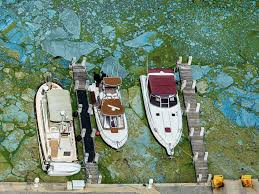This terrific article by CNBC presents a nice summary of some issues pertaining to Harmful Algae Blooms (HAB) across the USA. At its end, it remarks that funding for HAB research has been cut over the past several years from $22 milion to $9 million.
If this were not true, it would be considered preposterous. After all, the total budget for the US Government in 2016 is $3,950,000,000,000,000 — of which $9,000,000 is being applied for HAB research.

Let’s look at these numbers again.
$3,950,000,000,000,000.
$9,000,000.
When the 12th largest body of water in the world, Lake Erie, and the 11 million people who rely on it for their water supply are dramatically and negatively affected on an annual basis by HAB outbreaks, this meager investment is clearly insufficient.
Consider that an estimated $6,000,000,000 will be spent on the presidential election alone … and you see the problem here.
According to this terrific report by Wood’s Hole Oceanographic Institution, which is admittedly 20 years old, the annual cost of HAB in the USA THEN was about $50,000,000 year. That number is surely higher now … most likely markedly so.
The solutions for reducing HAB are out there. They cost money. It takes research.
A country with a budget such as our’s, with one-year presidential political campaigns that spend more than the money the National Basketball Association grosses in a year, can do much better.
Or HAB will only get worse.



